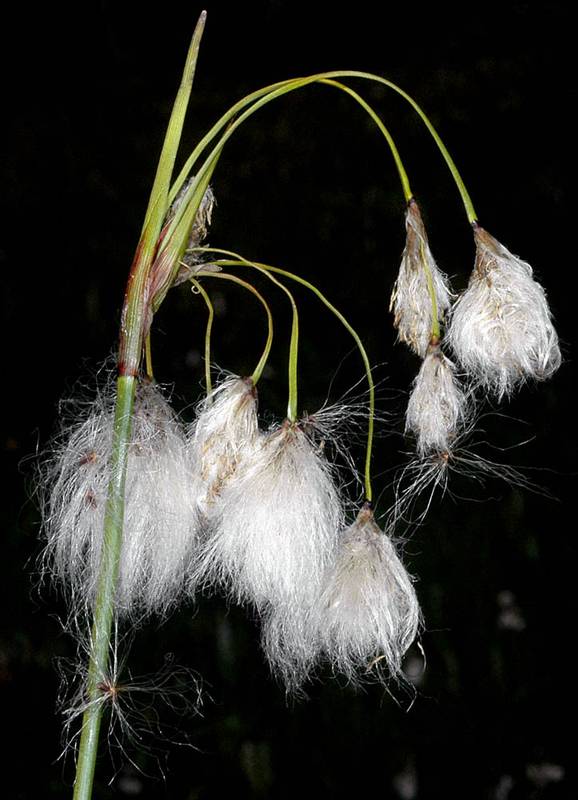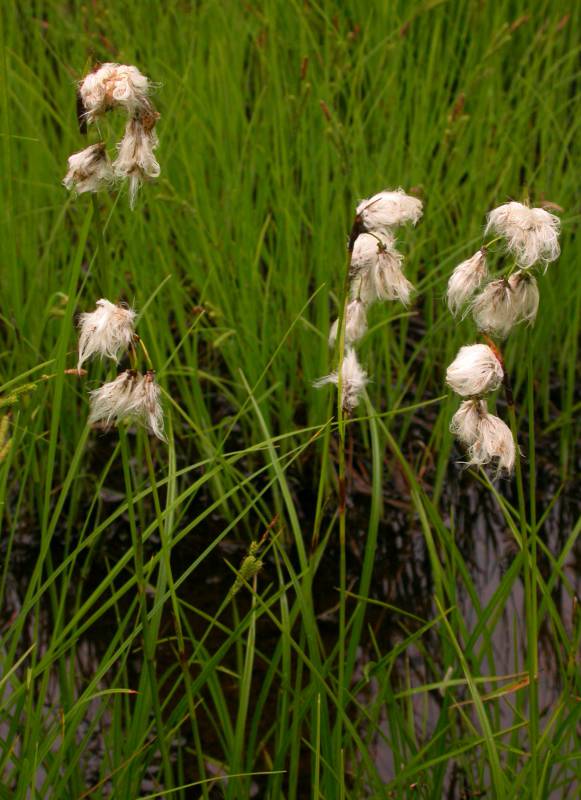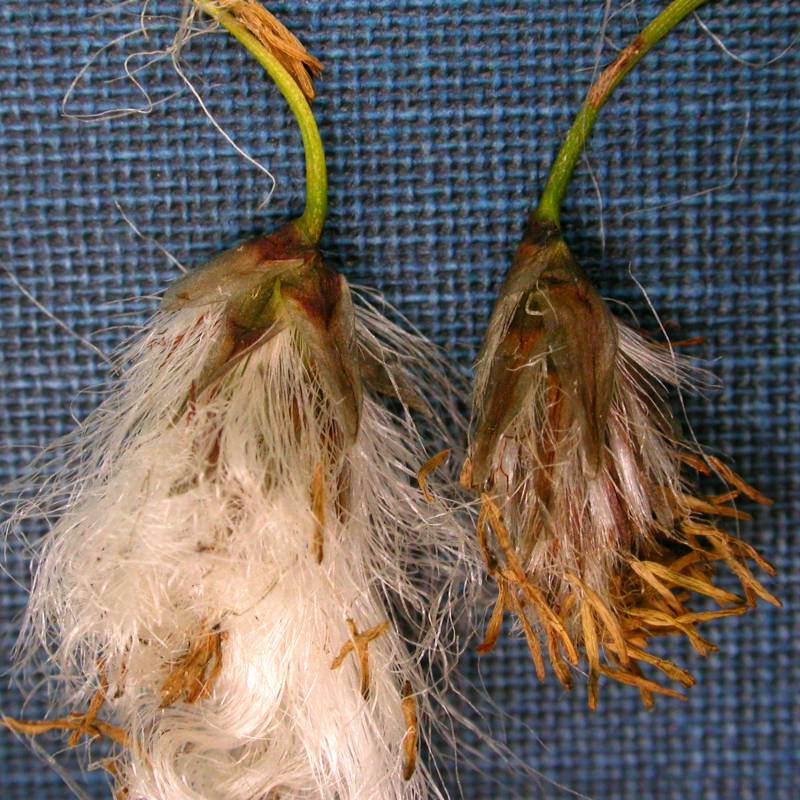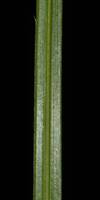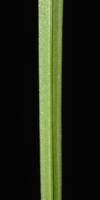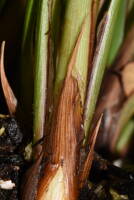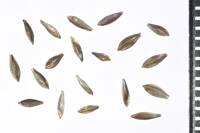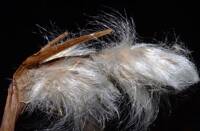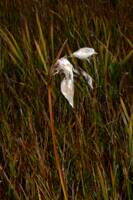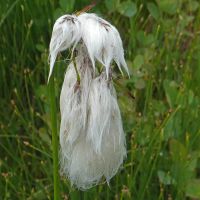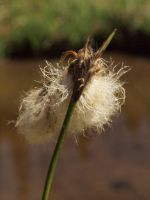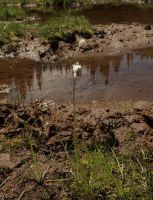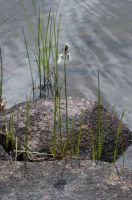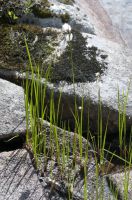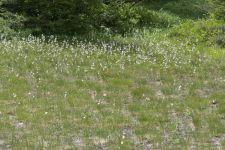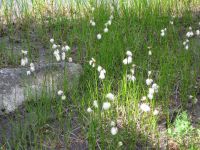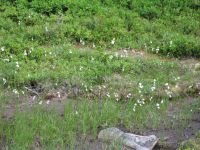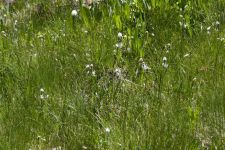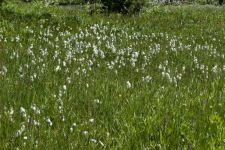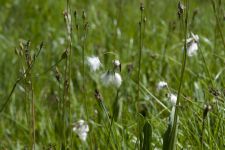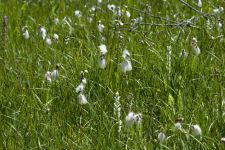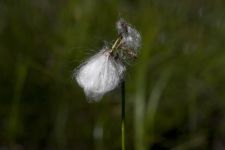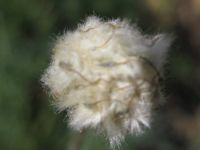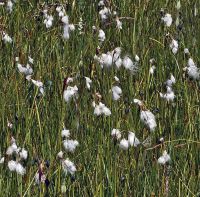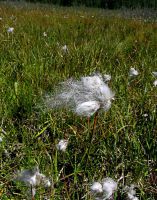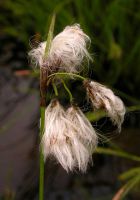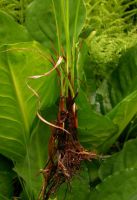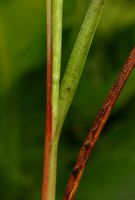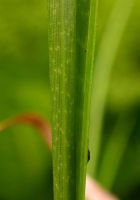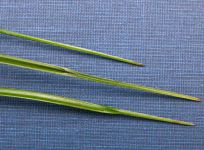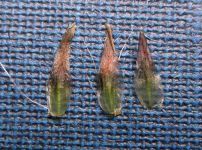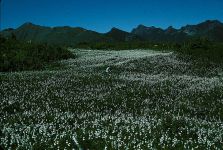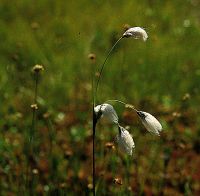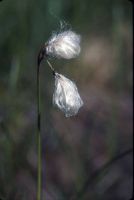Distribution: Occurring on both sides of the Cascades crest in Washington; Alaska to Oregon, east to the Rocky Mountains, Great Plains, Great Lakes region, and eastern North America.
Habitat: Cold swamps and bogs at middle to high elevations in the mountains.
Flowers: July-August
Origin: Native
Growth Duration: Perennial
Conservation Status: Not of concern
Pollination: Wind
Herbaceous perennial from extensive creeping rhizomes, the culms sub-terete, 2-6 dm. tall.
Leaves basal and cauline, the blade elongate, 2-6 mm. wide, flat, becoming channeled near the tip; sheaths closed; uppermost culm leaf with blade equaling the sheath.
Spikelets 2-8 in a terminal inflorescence, pedunculate in an umbel, the peduncles compressed, smooth; umbel subtended by several unequal involucral bracts, 2 or more of them foliaceous above the papery base; scales subtending the flowers scarious, tawny to brownish; perianth consisting of numerous, white, capillary bristles 2-4 cm. long; stamens 3; style trifid.
Achenes blackish, 2-3 mm. long, obovate.
Publication: Verz. Gew. Teutschl. 153. 1782. 1782.
-
ssp. angustifolium – many-spiked cottongrass

PNW Herbaria: Specimen records of Eriophorum angustifolium in the Consortium of Pacific Northwest Herbaria database
WA Flora Checklist: Eriophorum angustifolium checklist entry
OregonFlora: Eriophorum angustifolium information
E-Flora BC: Eriophorum angustifolium atlas page
CalPhotos: Eriophorum angustifolium photos

